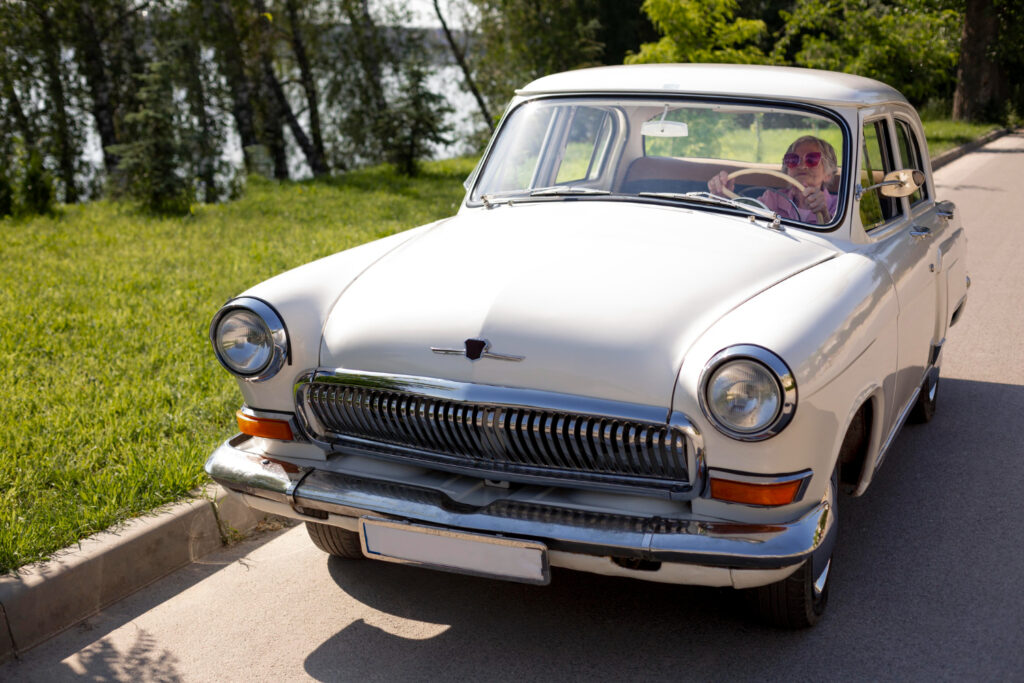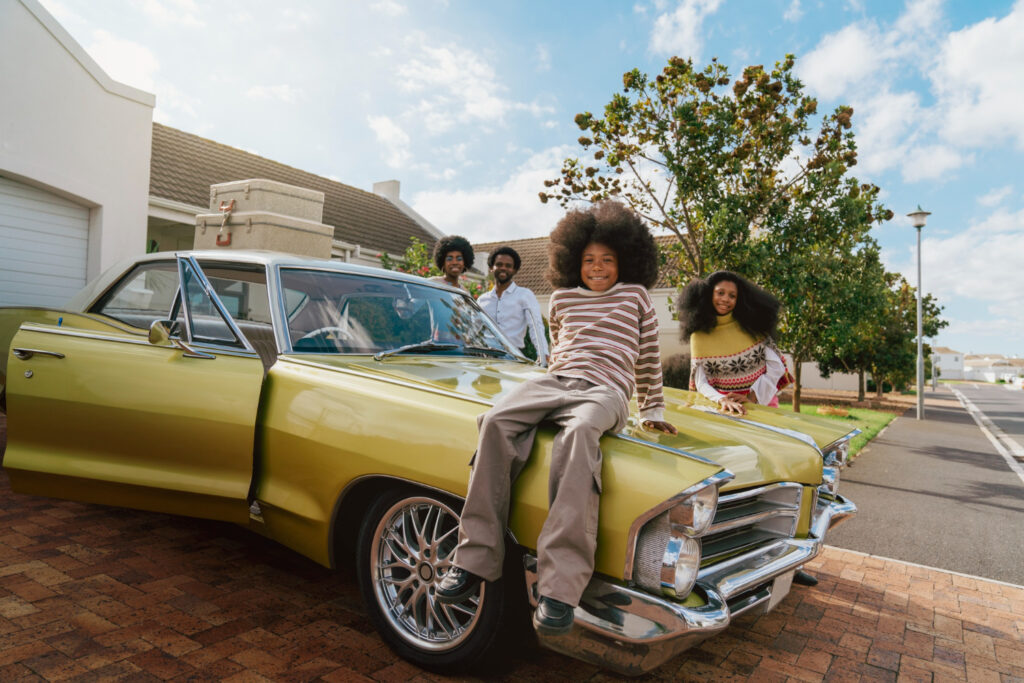Antique Car Insurance is an antique vehicle a matter of pride, heritage, and meticulous preservation. These marvels of yesteryear, with their polished chrome, hand-stitched upholstery, and iconic silhouettes, are not merely machines—they are heirlooms that tell stories of a bygone era.
However, while owners devote extensive effort to their upkeep, one area often overlooked is securing a robust car insurance policy. This specialized coverage is not akin to standard auto insurance. It carries unique clauses, stipulations, and protections, tailored specifically to vintage automotive assets.
What Is Antique Car Insurance?
Antique car insurance is a specialized insurance policy designed for vehicles that fall under the category of “antique,” typically defined as being 25 years or older and preserved or restored to a condition reflective of its original state.
These vehicles are not used for daily transportation but rather for exhibitions, club activities, and leisurely drives. This distinction from standard usage warrants a different insurance approach—one that values historical and collectible merit over mere utilitarian function.

The Key Differentiators of Antique Car Insurance
1. Agreed Value Coverage
At the heart of any credible antique car insurance policy lies the concept of agreed value. This isn’t market value or depreciated cash value—it’s a pre-determined sum agreed upon by both the insurer and the owner.
Should the vehicle be totaled or stolen, the insurer pays out this agreed-upon amount, not a depreciated estimate. This ensures the collector does not suffer financial loss in case of a catastrophic event.
2. Usage Restrictions
These policies often come with specific limitations on how and when the antique car can be driven. This isn’t insurance for a daily driver.
Most insurers stipulate that the vehicle be used only for car shows, exhibitions, parades, or occasional leisure driving. Regular commuting or errand-running is usually prohibited.
3. Storage Requirements Of Antique Car Insurance
To qualify for car insurance, most providers mandate that the vehicle be stored in a secure, enclosed facility—such as a private garage or a specialized storage unit. The rationale is simple: these vehicles are irreplaceable. Proper storage reduces the risk of weather damage, vandalism, or theft.
4. Expert Valuation and Appraisals
Because of the niche nature of antique vehicles, insurers typically require a professional appraisal or detailed valuation to assess the worth of the vehicle. This assessment plays a crucial role in establishing the agreed value and validating the insurability of the vehicle under an antique car insurance policy.
Photographic documentation, maintenance records, and provenance history often accompany this evaluation.
5. Lower Premiums Than Standard Auto Insurance
Ironically, despite the high value of these vehicles, car insurance is usually more affordable than standard auto coverage. Why? Because antique cars are driven less frequently, are generally well-maintained, and are stored securely—substantially lowering the risk of claims.
6. Coverage for Spare Parts and Restoration
Another unique feature of many car insurance policies is coverage for spare parts and ongoing restoration projects. Antique vehicles often require rare components that are hard to find and expensive.
This coverage ensures that replacement parts, even if sourced internationally or custom-fabricated, are insured under the policy.
Eligibility Requirements for Antique Car Insurance:
While insurance companies vary slightly in their terms, most share common eligibility criteria:
The vehicle must be at least 25 years old, though some insurers consider cars 20 years or older.
The car should not be used as a primary mode of transportation.
Owners must maintain a clean driving record.
The vehicle should be in good or restored condition, or under active restoration.
Proof of secure storage is often required.
Owners typically must have another insured vehicle for daily use.
Types of Vehicles Covered Under Antique Car Insurance
While “antique” is a broad term, antique car insurance policies usually cover a specific class of vehicles:
Classic Cars: Vehicles over 20 years old that retain their original design and mechanics.
Vintage Cars: Generally cars manufactured between 1919 and 1930.
Antique Cars: Typically over 25 years old, and either in original condition or restored.
Custom-Built or Replica Vehicles: These may also qualify under certain insurer criteria if they replicate historic models.
Muscle Cars and Hot Rods: Depending on their age and value, these can also be included.
Each of these categories requires a nuanced understanding of the car’s historical significance, usage, and modifications, if any.

Policy Add-ons and Endorsements
Custom endorsements and add-ons enhance the core coverage of antique car insurance. These include:
Inflation Guard: Automatically adjusts the insured value to account for market inflation in collectible car values.
Travel Coverage: Protects the vehicle when it’s trailered or driven to car shows or exhibitions.
Roadside Assistance: Tailored for antique cars with flatbed towing instead of standard towing, ensuring safe transport without damage.
Spare Parts Coverage: For collectors with a cache of rare components and vintage parts.
Restoration Coverage: Covers vehicles in mid-restoration, a crucial option for collectors who rebuild vehicles from the ground up.
Factors That Influence Premiums
Although antique car insurance is generally less expensive, several factors can influence your premium:
Agreed Value: Higher value cars cost more to insure.
Storage Security: Cars stored in secure, climate-controlled facilities may attract lower premiums.
Mileage Cap: The lower the mileage, the more favorable the premium.
Driving History: Clean driving records are rewarded with better rates.
Location: Areas with high theft or accident rates may increase insurance costs.
Common Myths About Antique Car Insurance
“It’s Only for Show Cars”
Not true. While show cars certainly qualify, many weekend cruisers and hobbyist-owned vehicles also meet the requirements. The essential criterion is the vehicle’s age and limited use—not perfection.
“All Old Cars Qualify”
A 25-year-old car in poor condition with daily use won’t qualify. The vehicle must meet preservation standards and usage limitations.
“You Don’t Need Insurance if You Don’t Drive It”
Even if the vehicle never leaves your garage, it’s still vulnerable to fire, theft, and natural disasters. Antique car insurance offers protection for stationary risks too.
Choose the Right Provider Of Antique Car Insurance
Selecting a specialized insurer is essential. Mainstream insurance companies often lack the nuanced understanding required for antique vehicles. Look for providers with:
A strong reputation in the collector community.
Experience with classic, vintage, and antique cars.
Transparent agreed-value policies.
Comprehensive endorsements tailored to collector needs.
Many companies offer club-affiliated discounts or perks for members of vintage car associations or historical automobile clubs.
The Claims Process: A Different Ball Game
Claims under car insurance are typically more collaborative and less adversarial than standard auto insurance.
Given the agreed value clause and mutual understanding of the car’s significance, claims adjusters work with restoration specialists and appraisers rather than general auto shops.
The Emotional and Financial Imperatives:
Antique cars are often more than just vehicles—they’re emotional investments. Passed down through generations or painstakingly restored over decades, their worth can’t be captured by market value alone.
Antique car insurance recognizes and respects this emotional gravity, ensuring that collectors are not only financially protected but also emotionally supported in the event of a loss.
Future-Proofing Your Investment:
As the collectible car market continues to flourish, the value of antique automobiles continues to rise. Therefore, having an car insurance policy that evolves with your collection is critical.
Annual policy reviews, updated appraisals, and endorsements tailored to the latest trends in restoration and preservation ensure your policy remains aligned with the vehicle’s true worth.
Conclusion:
In conclusion, antique car insurance is not just a contractual necessity—it’s a tribute to automotive history. It acknowledges the craftsmanship, the culture, and the curator behind every chrome-trimmed fender and vintage dashboard.
Whether you own a 1920s Packard, a ’68 Mustang, or a rare European roadster, safeguarding it with the right policy isn’t optional—it’s imperative.


